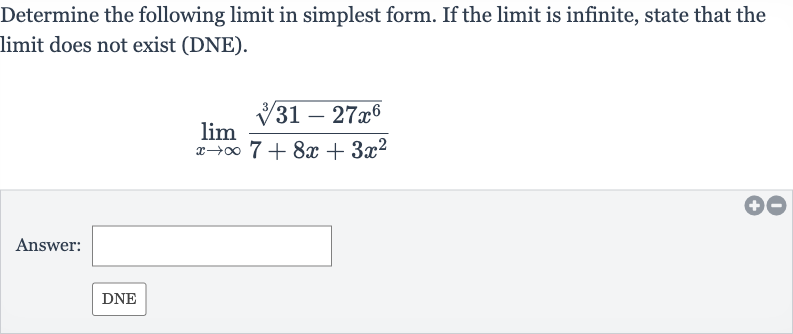Full solution
Q. Determine the following limit in simplest form. If the limit is infinite, state that the limit does not exist (DNE).Answer:
- Analyze Behavior: We are asked to find the limit of the function as approaches infinity. To do this, we will analyze the behavior of the numerator and the denominator separately as grows without bound.
- Consider Highest Powers: First, let's consider the highest power of in the numerator and the denominator. In the numerator, the highest power inside the cube root is , and in the denominator, the highest power is . To simplify the limit, we will divide both the numerator and the denominator by , the highest power in the denominator.
- Divide by : Dividing the numerator by inside the cube root gives us . Dividing the denominator by gives us .
- Simplify Numerator: As approaches infinity, the terms in the numerator and and in the denominator approach . So, we can simplify the limit to the leading terms, which gives us the limit of as approaches infinity.
- Take Cube Root: Now, we can take the cube root of , which simplifies to . The limit now becomes the limit of as approaches infinity.
- Divide by : We can simplify the expression further by dividing by , which gives us . So, the limit we are trying to find is now the limit of as approaches infinity.
- Simplify Further: Since grows without bound as approaches infinity, the limit of is negative infinity. Therefore, the limit does not exist.
More problems from Power rule
QuestionGet tutor help
QuestionGet tutor help
QuestionGet tutor help
QuestionGet tutor help
QuestionGet tutor help

